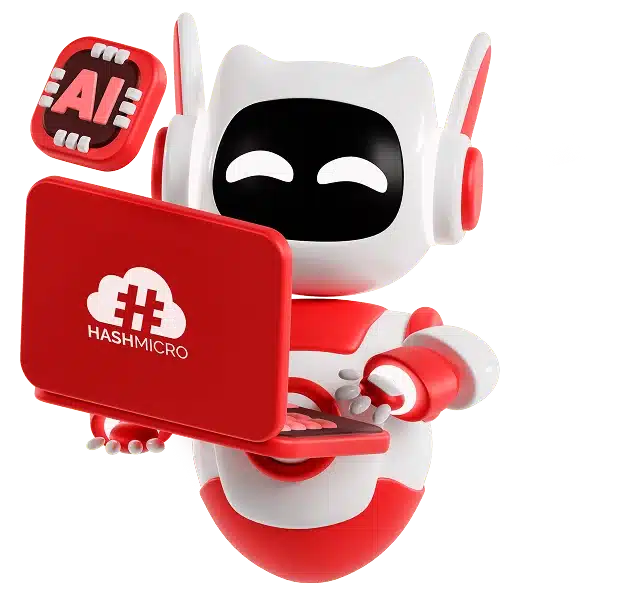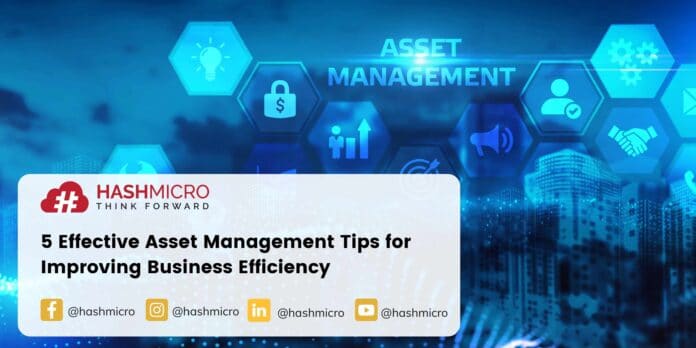No matter what type of asset your company has, or assets your company owns, managing assets is easy. Therefore, every type of company needs a comprehensive and integrated asset management system to help businesses manage assets effectively, especially if you have large amounts of assets that you have to sell to customers or clients.
Although there are various challenges that you inevitably have to face in managing your assets, it is not impossible that the process becomes easier and simpler with HashMicro’s most comprehensive asset management system.
In this article, we’ve rounded up five ways you can simplify your asset management so you can optimize the efficiency of your business.
Key Takeaways
|
Table of Content:
Table of Content
Determine A Reliable Person Or Team To Be Responsible For Your Assets
You may have a lot of things in your business to think about. You can’t control every single element of your business, particularly in the management of your assets. Therefore, you should determine a person that you can trust and rely on to be responsible for the company’s assets.
If your business is rather small, then one or two persons are enough to be responsible for managing your business assets. However, if you have a large company, then you should have a team that is focused on managing and maintaining your company’s assets reservation system.
Even so, the use of an integrated asset management system is still required to help you manage your assets easily. With all of the options available, you can start choosing by downloading the pricing scheme calculations for HashMicro’s asset management system first.
Hashy AI Fact

Need to Know
AI automates asset management processes, increasing control and performance. AI for Asset Management enhances maintenance planning, tracks assets in real-time, and analyzes usage data, ensuring longer asset lifespan and lower operational expenses.
Request a free demo today!
Also read: Avoid These 4 Problems with Asset Tracking System
Figure Out Your Asset Life Cycles
You need to know the life cycle of each of your assets, from the purchase to the disposal. Forecast how long you can use each of your assets. This will make it easier for you to determine the best time to perform asset maintenance.
By estimating the life cycle of your assets, you can also make purchases more wisely in the long run. For example, you can opt for computers that are more durable or have a longer usage period than the ones you currently have in your office.
Track Your Assets Routinely
Without regular asset tracking, your company can suffer financial losses. You may incur fees for paying unnecessary taxes, insurance, purchases, and asset maintenance. In addition, you can pay taxes on assets that have depreciated (or that you no longer own).
You can also be overwhelmed when your assets are insufficient to meet the demands of your customers or clients. Therefore, it is very important to keep track of the number of assets you actually own as well as the number of assets recorded on your books.
Also Read: 5 Tips Solving Troubles in Business Asset Management
Understand Your Asset Depreciation
You need to know the depreciation of your company’s assets. Find out which assets are no longer suitable for use, then find out why. You may not know that your employees are still using some obsolete items, which is certainly slowing down their work.
Therefore, regular tracking of depreciation is necessary. This activity can identify which items should no longer be used and know the best time to make a purchase.
Also read: What is an Asset Management System? Its Benefits & Features
Deploy Automated Asset Management Solutions
Managing assets manually takes a lot of time, effort, and money without getting equivalent results.
To optimize your asset management, consider using an automated solution. This software automates your asset creation processes, such as asset value tracking and depreciation, asset maintenance, contract management, cost analysis, and in-depth report generation.
By automating complex asset management tasks, you will be able to increase the efficiency, effectiveness, and productivity of your business. Get free demo now!





































